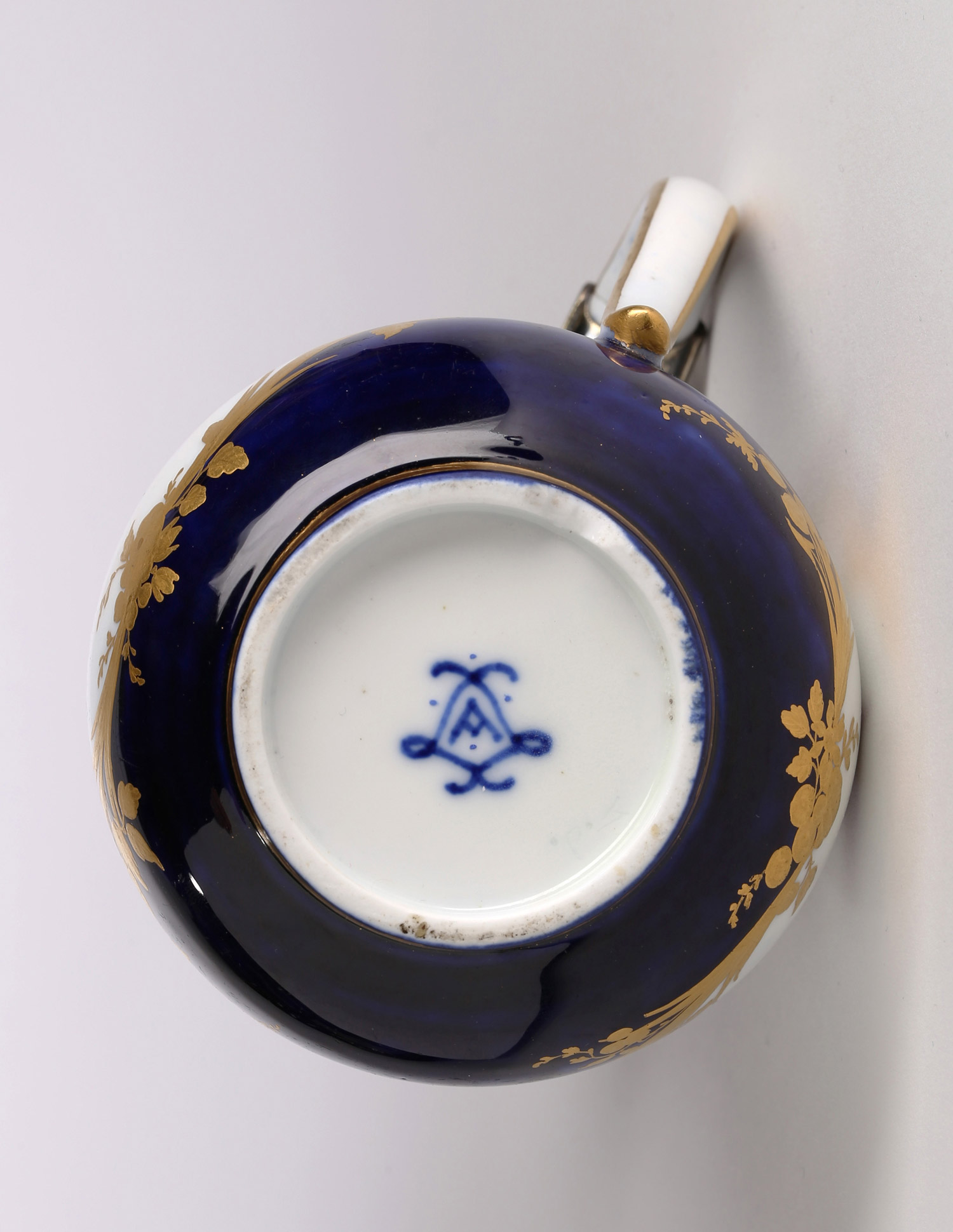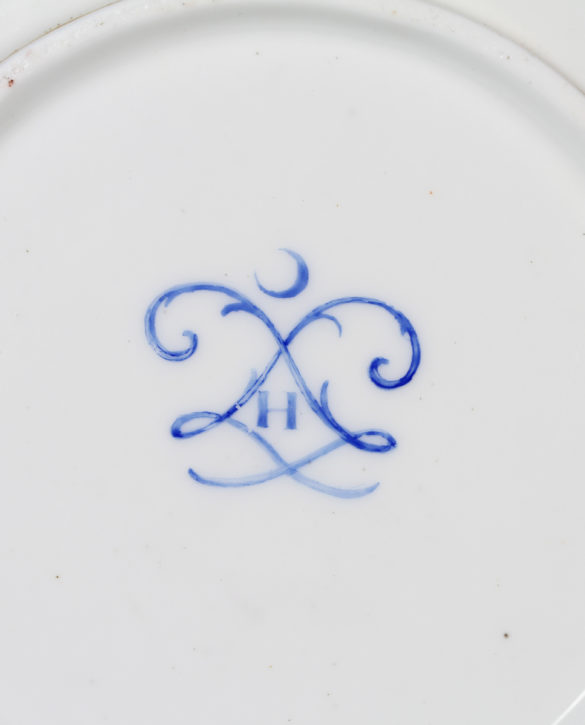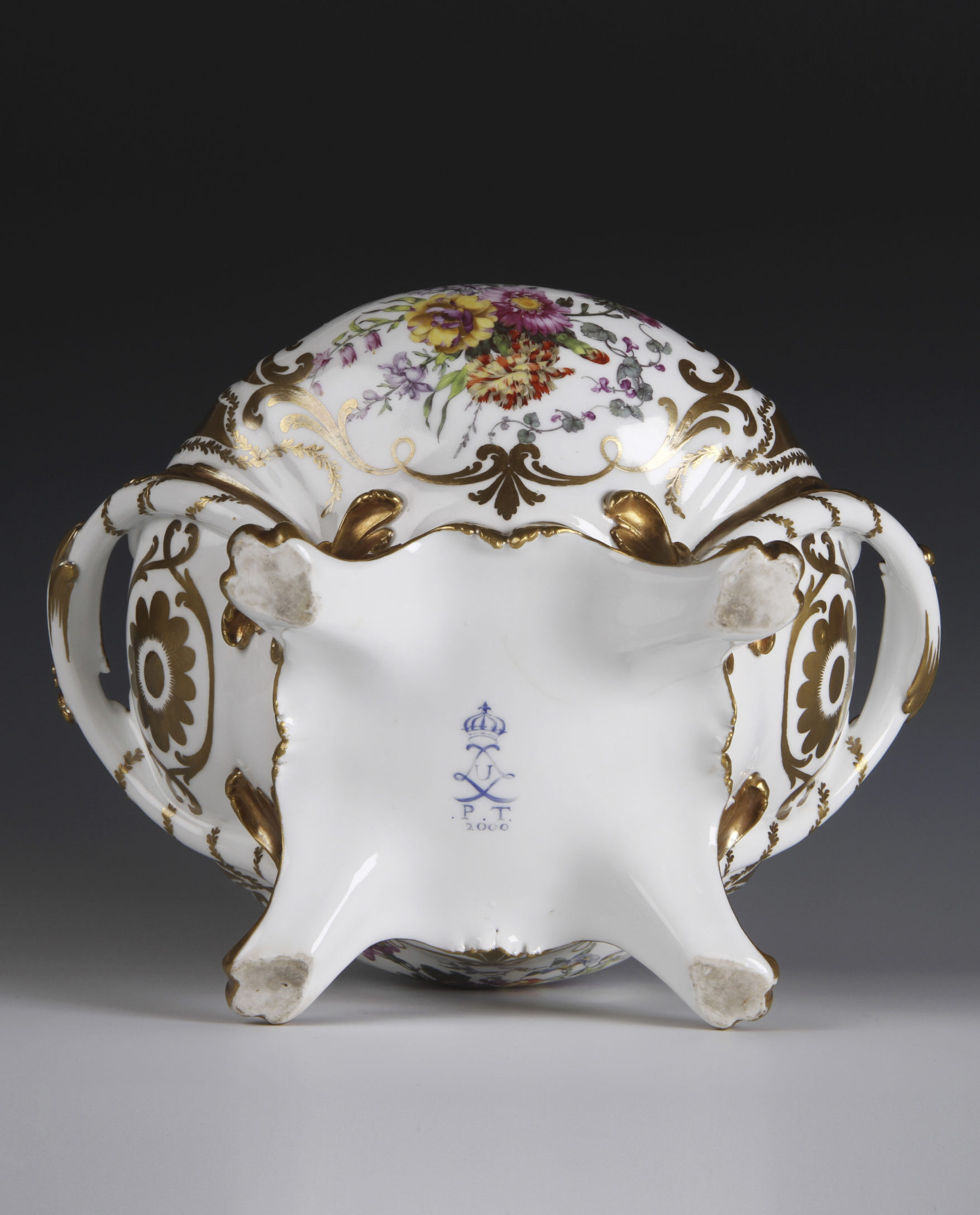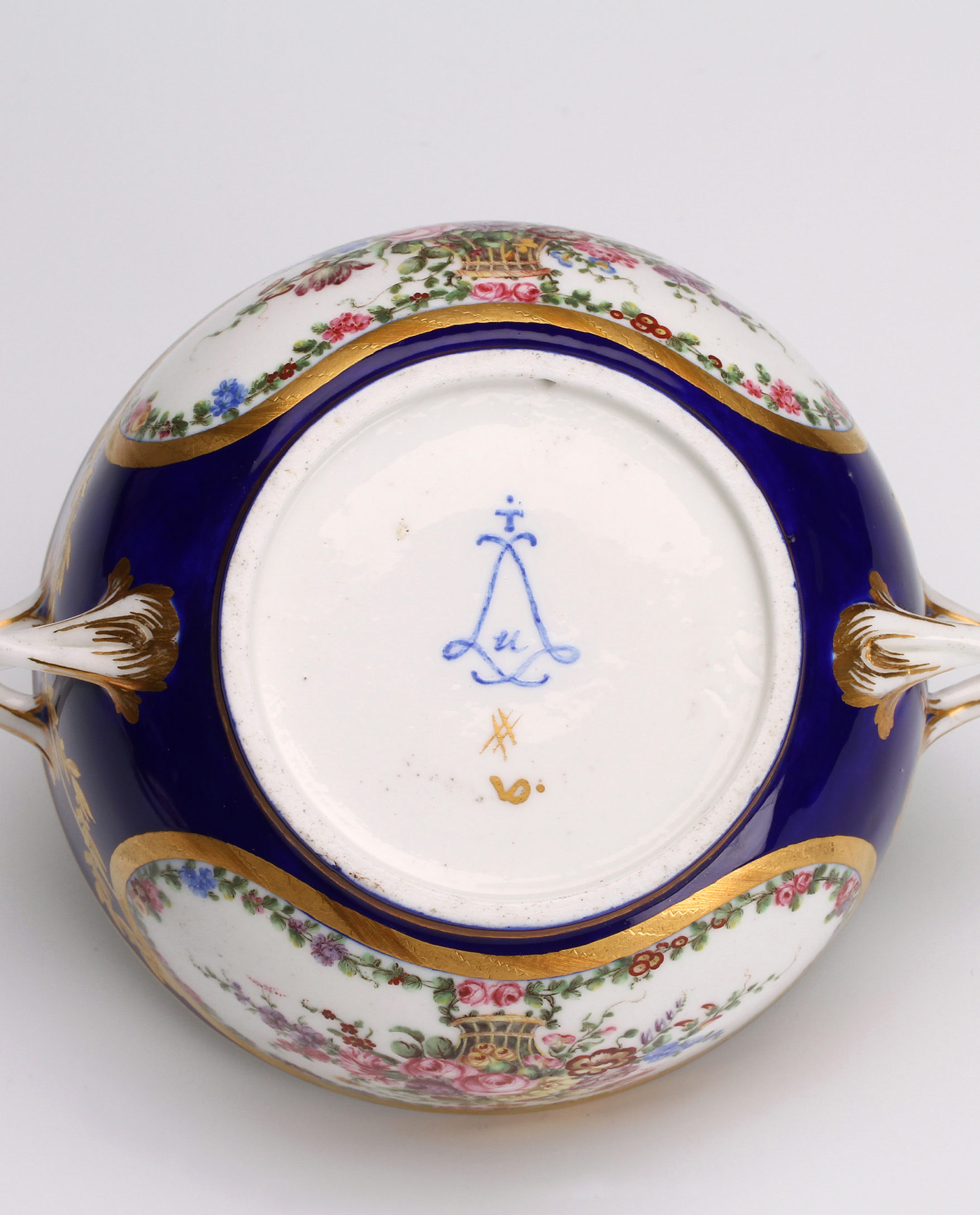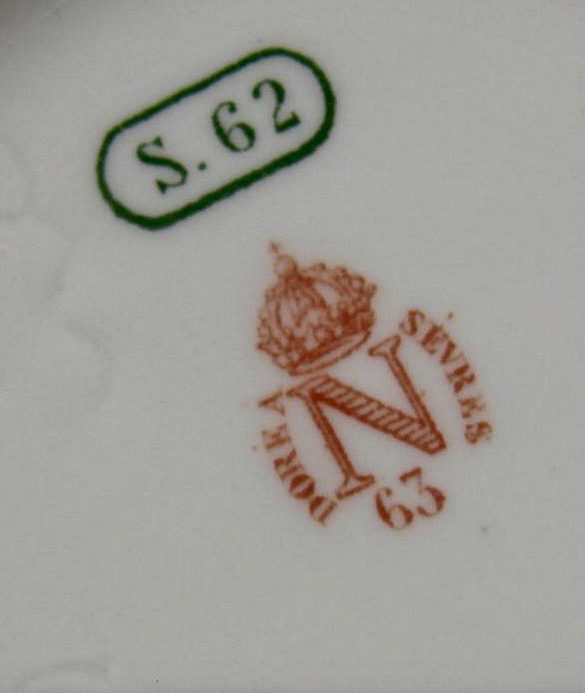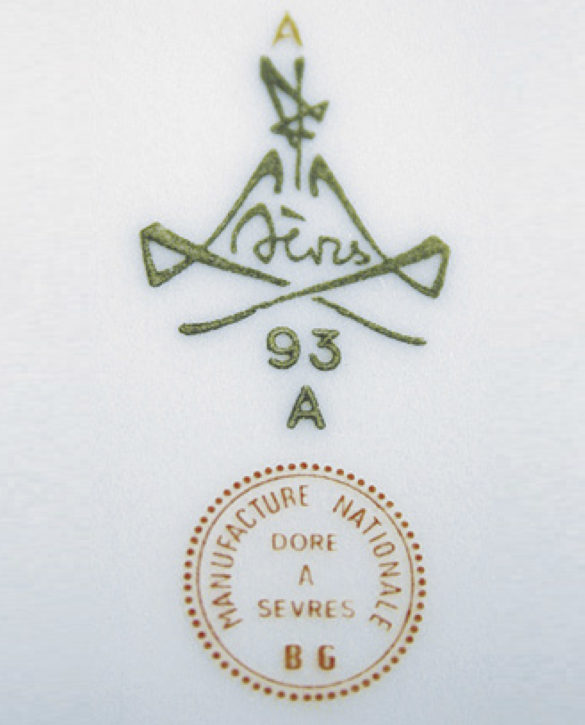The base of this Vincennes soft-paste porcelain ewer is painted under the glaze before firing with two interlaced ‘L’s taken from the French royal cipher. Enclosed within the cipher is an A, the date-letter for 1754. These appear in upper or lower case. The four dots have yet to be explained and are perhaps a painter’s mark.
Detail, ewer and cover, pot à l’eau tourney, second size, bleu lapis ground, 1754, silver-gilt mounts. (Private Collection)

